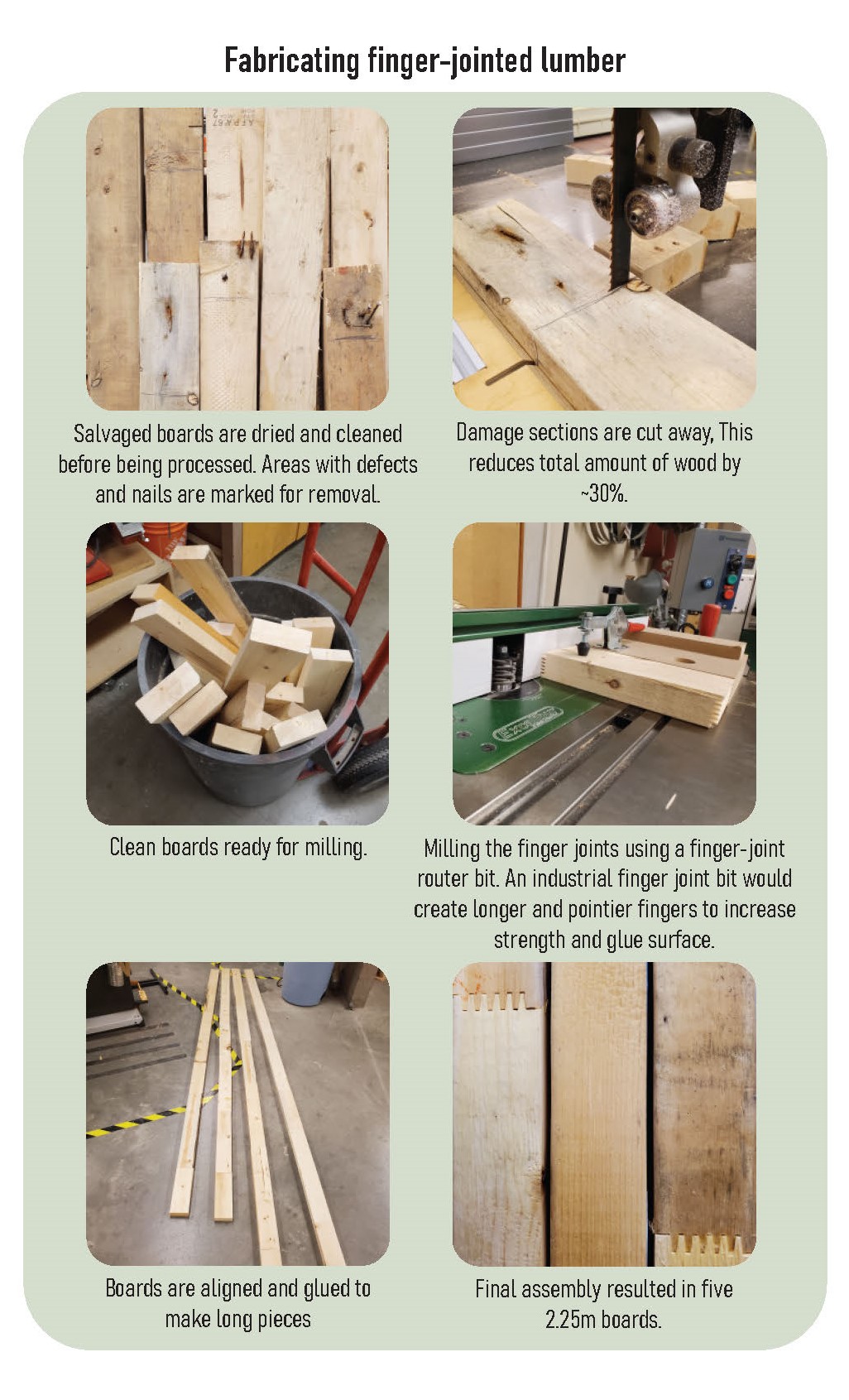
Finger-jointed lumber (also known as edge-glued lumber) is a method of salvaging short pieces of lumber into full size boards. The joining method produces wood that is even stronger and straighter than regular dimensional lumber. This wood can theoretically be used any kind of light wood framing application and it can be made in any standard size, providing there is sufficiently wide feedstock. This recycling process already exists in the lumber industry so translating this to salvaged wood would be a fairly straightforward process. Our research to include salvaged feedstock in finger-jointing processes is centered around assessing the financial viability of the product, developing re-grading and code-conforming protocols to allow for simple reuse, and analyzing the specific volume of wood that is viable for finger-joint upcycling.
The images above illustrate a typical finger-jointing line. Any waste that the line produces could be used for other applications such as wood fibre insulation.

The images above show the laboratory process for making finger-jointed lumber from salvaged C&D waste.